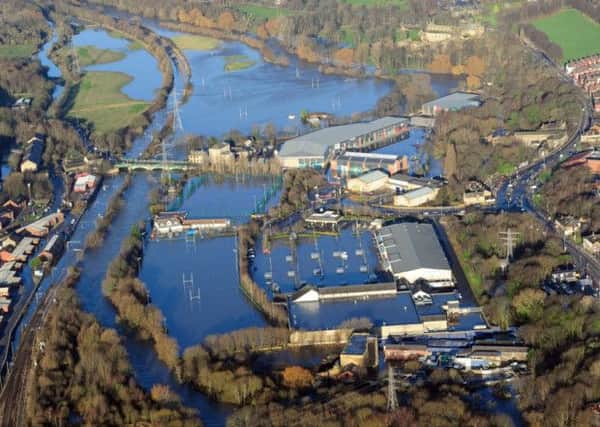Farmers best placed to manage uplands, says NFU


Flooding this winter across Cumbria, Lancashire and Yorkshire prompted calls for hill landscapes to be returned to a more natural state to catch rainfall and prevent flooding, through measures such as planting trees, removing sheep, restoring peat land and reintroducing species including beavers.
But National Farmers’ Union uplands forum chairman Robin Milton said farmers had been shaping the landscapes people loved for centuries, and were best placed to know how they responded to events such as extreme rainfall.
Advertisement
Hide AdAdvertisement
Hide AdHe called for a long-term vision to assess what the UK actually wants from its moorland and hill country, and make food production integral to managing the landscape.
“We’ve got to come up with an integrated management policy for the uplands that involves farming, because after all, farmers have been there for a few hundred, a thousand years now,” he said.
Tourism in areas such as the Lake District, and his home region of Exmoor, depends on views of a landscape created by farming, he said.
He criticised suggestions that sheep on uplands were responsible for flooding further down the valleys, as sheep numbers had decreased by 20%-30% in the past 20 years, and “actually it rained a lot and water runs downhill”.
Advertisement
Hide AdAdvertisement
Hide AdNo mitigation measures would have coped with the record rainfall Cumbria experienced, he argued.
He also said reintroducing beavers to slow down rivers with dams would not prevent floods downstream, warning “a few logs in a river is not going to stop York flooding”.
Mr Milton, who was leading a discussion at the NFU annual conference, said: “There’s different approaches that can be done on a catchment basis.
“And really the feeling is, ask the farmer, because when it rains a lot, he’s generally the person who knows exactly where the water rises first and where it runs.
Advertisement
Hide AdAdvertisement
Hide Ad“Start with looking at the farm, at what we’ve got, and look how we can manage that better, rather than looking for changing single issues drastically,” he suggested.
Different measures could help in different places, he said, for example, peat restoration to retain water and better farm management such as cultivating some land to let water soak in rather than leaving it all as pasture.
But he said there was a need for evidence and compromise, as “everywhere up there is owned by somebody or is managed by somebody - it’s their livelihood”.
He said farmers could only manage the land for wider interests if it was profitable or they were paid to do so, with environment accounting for around half of the income for farmers in the uplands.
Advertisement
Hide AdAdvertisement
Hide AdFarmers should be paid for implementing measures that retain water on land rather than letting it run down to areas where it would flood towns, he said.
But he warned the new countryside stewardship scheme of incentives for looking after the environment had not “even thought about the uplands properly”.